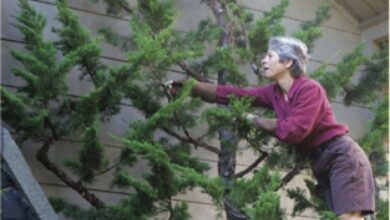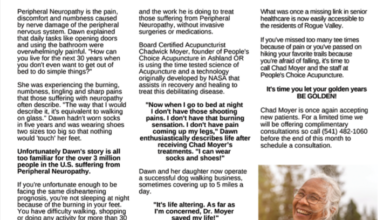Schneider Museum
This past June marked the completion of 30 years of art at the Schneider Museum of Art here in Ashland Oregon. LocalsGuide was pleased to help sponsor the fundraiser gala which turned out to be an enormous success!This month I had the opportunity to speak with museum director, Scott Malbaurn about his vision for our community and his worldview of art. “Museums are not meant to be silos, but rather extended learning opportunities for all.” It is both inspiring and exciting to see all the changes that Scott and the SOU team are actualizing here in Southern Oregon.Here’s the update from the Schneider Museum of Art!
Scott, congratulations on the success of your fundraiser gala and welcome back to LocalsGuide!
Thank you! It had been six years since the museum’s last fundraising gala and the first since I came on board in 2015. I had no idea if we would have a good turn out or not. We assembled an excellent gala committee headed up by locals Sandy Friend and Judy Howard along with our volunteer reception committee organizer, Vivian Stubblefield. We sold out within a week and were overwhelmed with a swift return of RSVP cards. Everyone showed up happy and left even happier. The gala had a soft fundraiser component to it with a pearl necklace created by CMD Designs for our Pearl (30th) Anniversary that went with a champagne toast drawing. The artists in the exhibitions made available artwork for a silent auction and other local artists created ceramic table centerpieces that were silent auctioned at each table. Needless to say, we are very pleased with how it turned out. We received positive feedback and some demands for another!
It sounds like this was such a success that you might need to do another fundraiser.
I think so. We all had a wonderful time. I can’t image letting the year go by without planning for another. I’ve just reached out to our 2017 Gala Planning Committee and they are all on board for another in 2018.
Scott, please tell us about some of your upcoming exhibitions.
For our fall exhibitions we will present three solo shows and a fourth that will highlight work from our permanent collection. We will be showing work by two Brooklyn, NY based artists; Loren Munk and Nat Meade and the third by local artist Clifford Wilton who unfortunately passed away last fall. We are honored to show some of Cliff’s work and we thank his wife Ann Wilton, son Nicholas Wilton, and friend Gabriel Mark Lipper for their assistance in assembling the show.
Along with these exhibitions we will be utilizing a National Endowment for the Arts grant to assemble some programing of visiting artist lectures, conversations and demonstrations to take place in Ashland, Portland and New York City. These sponsored events that take place outside of Ashland will help us expand our presence and the work we do beyond Ashland and beyond Oregon’s borders.
Please say more about these sponsored events in New York City and Portland.
We will start it off here in Ashland on October 6th with a round table style discussion titled Fine Arts: Entrepreneurship and the Creative Economy with invited guests, SOU faculty, and students. This talk will be open to the public. We will hold the same conversation in New York City with some of the same guests and more. This is in hope that new insight may emerge for ourselves, for our student audiences, and local artists. Our fall exhibiting artists will present a lecture on their work during the run of the exhibitions and visiting artist Adam Bateman will construct a new sculpture alongside our students for our new sculpture garden adjacent to the Art Building on Indiana Street. In Portland, I will hold a gallery talk at the Charles Froelick Gallery with artist Nat Meade who has a solo exhibition there and in the Schneider Museum of Art’s Treehaven Gallery.
Scott, let’s talk about “Creative Economies”. Where does this term come from and how does it relate to the work you are doing?
In the United Kingdom, Europe, Canada and countries in Latin America, it has been recognized for many years that the creative sector is directly related to their countries GDP. This is estimated at 400 billion dollars globally. This includes design, architecture, music, performing arts, TV, video-games etc. Beyond the studio practice and exhibiting in a commercial gallery, what other entrepreneurial skills should the fine art artist take into consideration? I hope to learn more by bringing in a group of artists who wear multiple hats such as arts writers, curators, archivists, arts administrators, authors, arts workers, etc. Through conversations sharing perspectives and experiences, new ideas may begin to emerge. Personally, I will be looking for new developments on how to better assist artists. Educationally, we also hope to discover new ways to engage our students by sharing new findings on how artists today participate in and contribute to the Creative Economy.
I hear there will also be some new additions to the sculpture garden.
Well, it will be a new sculpture garden altogether. It will be something small with three to four artworks in it. As mentioned above, artist Adam Bateman will construct and donate a piece. This sculpture garden is at the entrance of the Center for the Visual Arts here at SOU, adjacent to Indiana Street. We have had an outdoor sculpture in our fine art storage for some time now and we applied for and received an Oregon Arts Commission Fine Art Acquisition Grant. There will be three artworks from the Schneider Museum of Art going into the garden and plans for a fourth location for revolving student work.
I must congratulate you on all the change you are bringing in to the Schneider Museum of Art on the national and international level. What are some of your goals for moving forward?
We are creating a National Advisory Council to act as representatives in their respective cities and to offer guidance when needed. Many of our stakeholders continue to request exhibitions that they would otherwise have to travel to see. We will continue our outreach in bringing artists and curators from afar. Our students benefit from this tremendously. They are learning from the contemporary art world through textbooks, magazines and blogs. It is great when they get to see the work in person and sometimes, even better, meet the artists themselves. In the fall of 2016, one of our students created work based off of research on the artist Tofer Chin who lives and works in Los Angeles. She was unaware that Tofer was exhibiting with us this summer. She not only got to meet him in person but she painted one of his murals in the Main Gallery.
We want to bring in more artists from abroad. Shipping costs are always an issue and we look for grant assistance for that. This past spring renowned Japanese media artist, Ken Matsubara was curated into our AIFF collaboration by Richard Herskowitz. Mr. Matsubara flew out to attend the opening reception which made the opening that much more special.
Scott, please tell us about your goal to inspire students to become more successful artists.
We teach our artists how to be better -technically and conceptually. We also need to introduce them to paths available to become contributing members of the Creative Economy. This is a very entrepreneurial endeavor that can be beyond the comfort zone of most “creatives” but the reward may make the discomfort worth it. Beyond the studio practice, artists have to put on administrative hats and search out opportunities. They have to be poised for these opportunities such as exhibitions or commissions. Today’s trends see artists entering incubators alongside designers, engineers, architects, business people and funders. Artists have consistently been the ‘outside of the box’ thinkers. They are like science fiction writers not bound by function or what we already know that we are capable of. They inspire and push designers to dream up new products and they create interesting problems for engineers. That is not to say that the fine art virtuoso is no longer applicable to the Creative Economy because they are. Trading within the fine art gallery market is a multi-billion dollar industry. But what some see as the tough part with this is that these artists, more often than not, have to go to cities like New York, Chicago and Los Angeles to connect with the art market industry there. It is like wanting to become a Hollywood movie star or a Broadway actor.
Where do you go to be a part of these industries? Movie stars emerge from Los Angeles and Broadway stars are, well, on Broadway in New York City.
Last year, via surveys and research, you and your team identified that the Schneider Museum of Art is very much participating in the Ashland tourism economy. Please say more.
Last year we learned that 63% of our 14,000 visitors are from outside of Ashland and 41% are from 50+ miles away, which means that they are staying here, eating here and patronizing other businesses. We know that we may not be the number one reason for all of these patrons coming to Ashland. But this does tell us that we contribute to what makes Ashland their preferred destination. Visiting the ‘local art museum’ is in the top three to five things to do when visiting a city so it makes sense that many of our visitors are tourists.
With all of the change underway at the Schneider, what types of feedback have you been receiving?
The feedback has been very positive. From the locals who stop by weekly, to the national and international tourists; lovers of the visual arts have been enjoying our exhibitions, Free Family Days, visiting artist lectures, free docent-led tours every Tuesday at 12:30 and more. We work hard on the day-to-day. We meet with community members to check in on what we are doing here and what we are not doing. We keep an open door for all ideas. Not all are right for us, but we often surprise people that their idea does present new opportunities.
With all that is going on, how do you have time for your own work?
I do not get to spend as much time on my personal artwork as I used to, but the job here at the Schneider Museum of Art is like the creative process in the studio. The coordinating and arrangement of exhibitions is literally putting something together. There are many problems that pop up and you have to be creative to solve those problems. I find a similar joy in the job as I do working on my artwork. I will be showing some of my personal work at the Wiseman Gallery in Grants Pass this fall.
I am also interested to hear more about your worldview of art and where you see things going next.
My worldview of art comes from the conversations happening globally and locally. I take both a macro and micro approach. As mentioned above, art thrives in major cities because of larger populations there. The population percentage that supports arts is usually less than 50%. Ashland is special in that a majority of the population here supports the arts. With that public support, we want to do more to reciprocate and give back. We want to present the spectrum that the art world has to offer throughout the year with contrasting and complementary seasonal exhibitions. There are artists engaging with new technologies that are exciting, and yet with the growth of technology, a demand for the handmade grows as well. It is like the resurgence of boutique record stores even though streaming music is easier than ever. Today, the art world is very plural. A virtual reality experience may be mind-blowing for some, but so too is a recently thrown ceramic by a local potter. Culture is interesting in this way. It is very complex, living, breathing, presenting paradigm shifts and reinventing traditional mediums alongside new innovative technologies.




